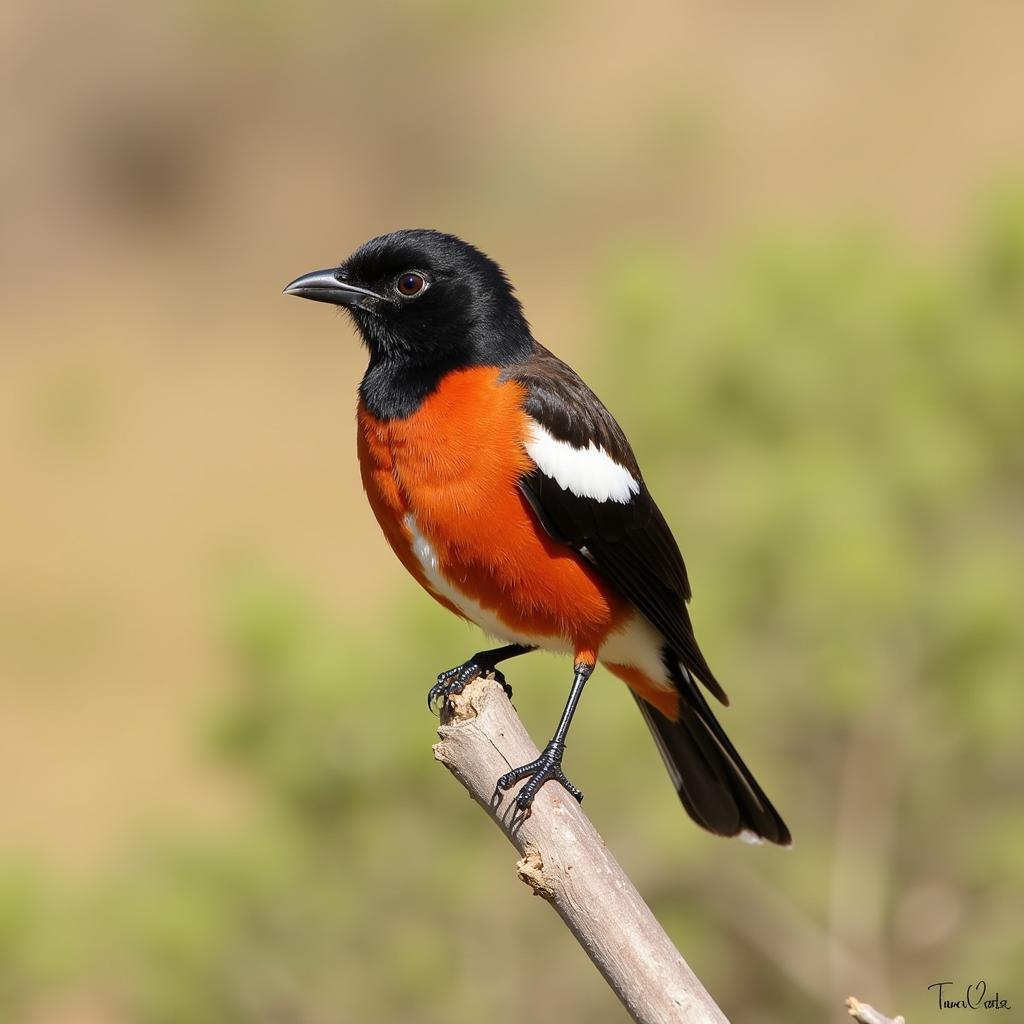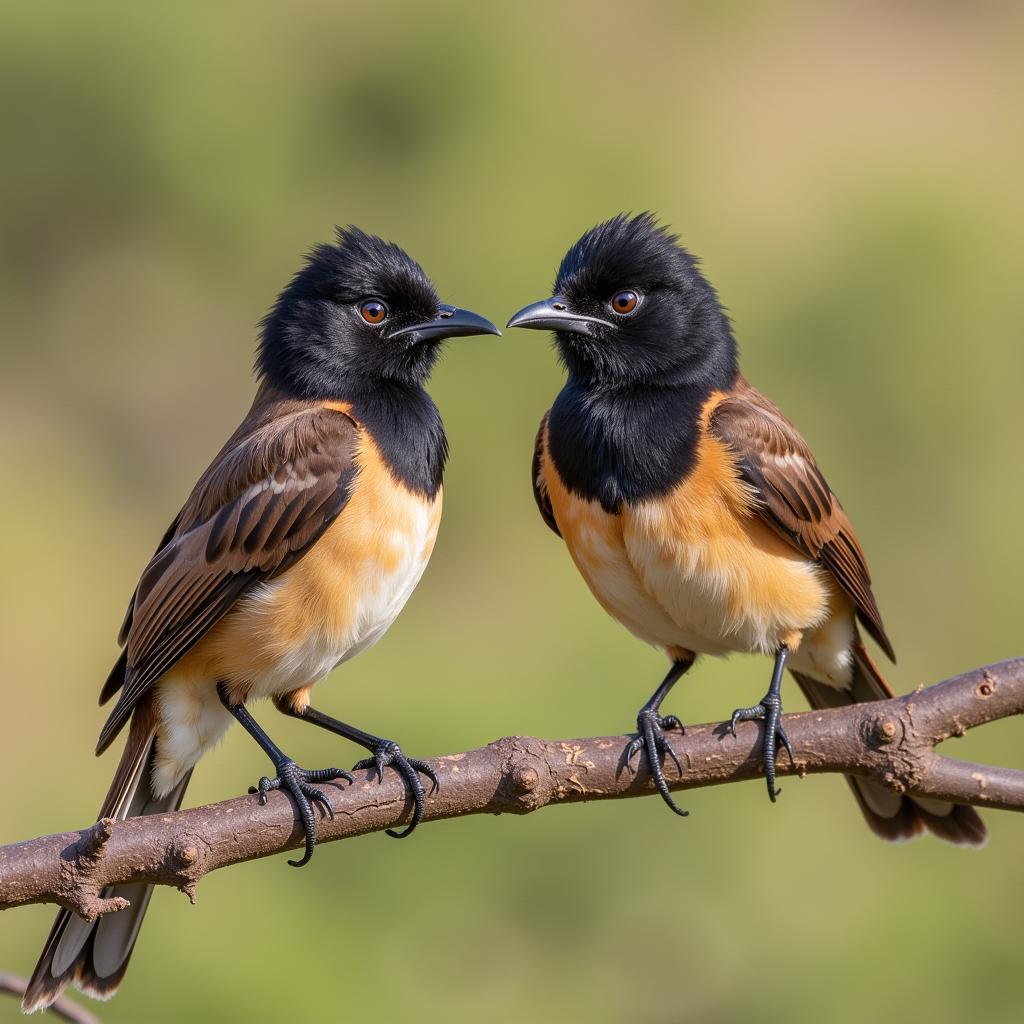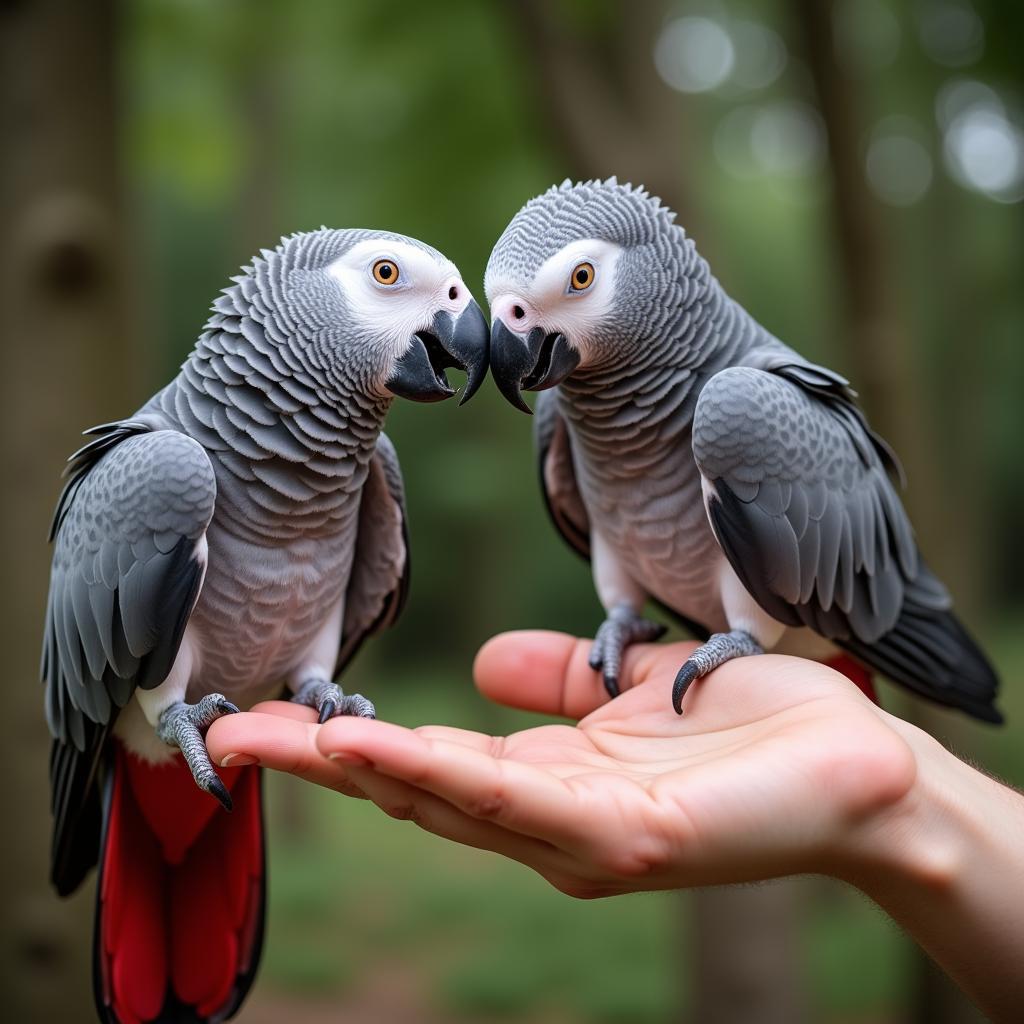Exploring the African Stonechat: A Familiar Friend in the Savanna
The African Stonechat, a small but vibrant bird, is a common sight across the vast African landscapes. This charismatic little bird, with its distinctive plumage and upright posture, is a familiar friend to anyone who has spent time exploring the savannas, grasslands, and open woodlands of Africa. Let’s delve deeper into the fascinating world of this charming avian resident.
Identifying the African Stonechat: Plumage and Behavior
The African stonechat ( Saxicola torquatus ) displays a striking combination of colors. Males typically boast a black head, a bright orange-red breast, a white patch on the wing, and a white rump, giving them a truly eye-catching appearance. Females are more subtly colored, with brown and buff tones replacing the vibrant hues of the males. Both sexes share a distinctive upright posture, often perching prominently on bushes, rocks, or fence posts, constantly flicking their tails and wings. Their behavior is as characteristic as their appearance.
 Male African Stonechat Perched on a Branch
Male African Stonechat Perched on a Branch
Habitat and Distribution: Where to Spot the African Stonechat
The African stonechat’s adaptability allows it to thrive in a variety of habitats across sub-Saharan Africa. From open grasslands and savannas to agricultural lands and even urban gardens, these birds have carved out a niche for themselves in diverse environments. They are generally absent from dense forests and arid deserts. Their widespread distribution makes them a relatively easy bird to spot for birdwatchers and nature enthusiasts alike. The key is to look for open areas with scattered bushes and shrubs.
Diet and Feeding Habits: What Does the African Stonechat Eat?
African stonechats primarily feed on insects, including grasshoppers, beetles, and caterpillars. They are agile hunters, often hovering briefly before swooping down to capture their prey from the ground or vegetation. They are also known to occasionally consume small seeds and berries, supplementing their insect-based diet. This flexible diet allows them to thrive in environments where insect populations fluctuate.
The African Stonechat’s Song: A Familiar Sound of the African Bush
The African stonechat’s song is a series of short, sharp calls and whistles, often described as a “chack-chack” or “whee-chack” sound. This characteristic call is a common sound in the African bush and can be easily recognized. They are particularly vocal during the breeding season, often singing from prominent perches to defend their territory and attract mates. Their song contributes to the rich tapestry of sounds that define the African wilderness.
Breeding and Nesting: Raising the Next Generation of Stonechats
African stonechats are monogamous breeders, forming pairs that typically last for a single breeding season. They build cup-shaped nests from grass and other plant materials, concealing them amongst dense vegetation near the ground. The female lays a clutch of 2-5 eggs, which she incubates for about two weeks. Both parents participate in feeding the chicks, which fledge after about 14-18 days.
Dr. Anika Mtwara, an ornithologist specializing in African birdlife, notes, “The African stonechat’s breeding success is often tied to the availability of insects, highlighting the interconnectedness of species within their ecosystem.” She further adds, “Their adaptable nesting habits allow them to thrive even in disturbed habitats.”
 Pair of African Stonechats on a Branch
Pair of African Stonechats on a Branch
Conservation Status: Protecting the African Stonechat
The African stonechat is currently listed as a species of Least Concern by the International Union for Conservation of Nature (IUCN). However, habitat loss due to agricultural expansion and urbanization poses a potential threat to their populations in some areas. Conservation efforts focusing on habitat preservation are crucial to ensuring the continued survival of these charismatic birds. Understanding the importance of maintaining biodiversity is essential for safeguarding species like the African stonechat.
Conclusion: The African Stonechat – A Vital Part of the African Ecosystem
The African stonechat, with its vibrant colors and lively behavior, is more than just a pretty face in the African landscape. It plays a vital role in the ecosystem, controlling insect populations and contributing to the rich tapestry of life on the continent. Understanding and appreciating the significance of this small but mighty bird is essential for protecting the biodiversity of Africa for generations to come. If you are planning a trip to Africa, keep an eye out for the African stonechat. You’ll be delighted by its charming presence.
FAQs
-
What is the lifespan of an African stonechat? They typically live for 5-10 years in the wild.
-
Are African stonechats migratory? Some populations are partially migratory, while others are resident year-round.
-
What are the predators of African stonechats? They are preyed upon by snakes, raptors, and small carnivores.
-
How many subspecies of African stonechat are there? There are several recognized subspecies, with variations in plumage and distribution.
-
Do African stonechats live in flocks? They are generally solitary or seen in pairs, although they may gather in small groups during the non-breeding season.
-
How can I attract African stonechats to my garden? Providing insect-friendly plants and a water source can help attract them.
-
What is the scientific name of the African stonechat? Saxicola torquatus.
Need assistance? Contact us 24/7: Phone: +255768904061, Email: kaka.mag@gmail.com, or visit us in Mbarali DC Mawindi, Kangaga, Tanzania.

